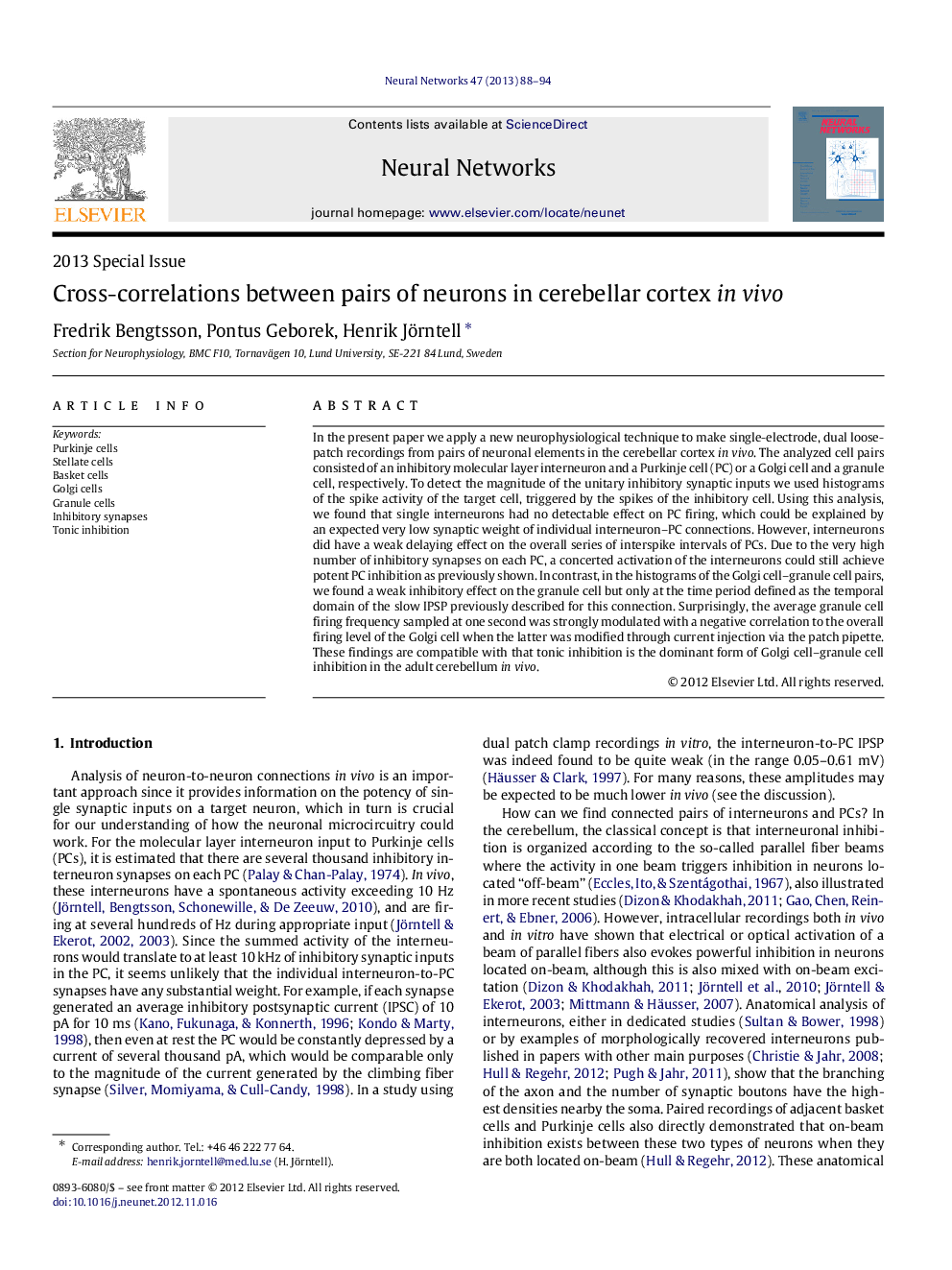| Article ID | Journal | Published Year | Pages | File Type |
|---|---|---|---|---|
| 6863377 | Neural Networks | 2013 | 7 Pages |
Abstract
In the present paper we apply a new neurophysiological technique to make single-electrode, dual loose-patch recordings from pairs of neuronal elements in the cerebellar cortex in vivo. The analyzed cell pairs consisted of an inhibitory molecular layer interneuron and a Purkinje cell (PC) or a Golgi cell and a granule cell, respectively. To detect the magnitude of the unitary inhibitory synaptic inputs we used histograms of the spike activity of the target cell, triggered by the spikes of the inhibitory cell. Using this analysis, we found that single interneurons had no detectable effect on PC firing, which could be explained by an expected very low synaptic weight of individual interneuron-PC connections. However, interneurons did have a weak delaying effect on the overall series of interspike intervals of PCs. Due to the very high number of inhibitory synapses on each PC, a concerted activation of the interneurons could still achieve potent PC inhibition as previously shown. In contrast, in the histograms of the Golgi cell-granule cell pairs, we found a weak inhibitory effect on the granule cell but only at the time period defined as the temporal domain of the slow IPSP previously described for this connection. Surprisingly, the average granule cell firing frequency sampled at one second was strongly modulated with a negative correlation to the overall firing level of the Golgi cell when the latter was modified through current injection via the patch pipette. These findings are compatible with that tonic inhibition is the dominant form of Golgi cell-granule cell inhibition in the adult cerebellum in vivo.
Keywords
Related Topics
Physical Sciences and Engineering
Computer Science
Artificial Intelligence
Authors
Fredrik Bengtsson, Pontus Geborek, Henrik Jörntell,
